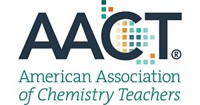Advertisement
Grab your lab coat. Let's get started
Welcome!
Welcome!
Create an account below to get 6 C&EN articles per month, receive newsletters and more - all free.
It seems this is your first time logging in online. Please enter the following information to continue.
As an ACS member you automatically get access to this site. All we need is few more details to create your reading experience.
Not you? Sign in with a different account.
Not you? Sign in with a different account.
ERROR 1
ERROR 1
ERROR 2
ERROR 2
ERROR 2
ERROR 2
ERROR 2
Password and Confirm password must match.
If you have an ACS member number, please enter it here so we can link this account to your membership. (optional)
ERROR 2
ACS values your privacy. By submitting your information, you are gaining access to C&EN and subscribing to our weekly newsletter. We use the information you provide to make your reading experience better, and we will never sell your data to third party members.
Education
ACS Introduces Middle School Chemistry Curriculum
by Linda Wang
February 28, 2011
| A version of this story appeared in
Volume 89, Issue 9

The Office of K–8 Science in the American Chemical Society’s Education Division has developed a free online middle school chemistry unit that is available to teachers at www.middleschoolchemistry.com. The curriculum offers fully developed lesson plans to teach chemistry concepts at the middle school level.
The six chapters of the curriculum cover “Matter—Solids, Liquids & Gases,” “Changes of State,” “Density,” “The Periodic Table & Bonding,” “The Water Molecule & Dissolving,” and “Chemical Change.” Students explore these topics through hands-on experiences and teacher demonstrations. The teacher then uses molecular illustrations and animations to help students understand what is happening at the molecular level.
Using the concepts of inquiry-based learning, the new middle school curriculum helps teachers guide their students to ask scientific questions, design and conduct experiments, understand their observations on the molecular level, and record and communicate their results.
Manager James H. Kessler says the Office of K–8 Science developed the curriculum in response to the National Academy of Sciences’ newly drafted national science education standards, which encourage teachers, even at the middle school level, to explain phenomena based on atoms and molecules.
“A lot of teachers feel very nervous and ill-prepared to teach concepts in middle school chemistry because they’re starting to get into some difficult, more abstract material,” Kessler says. “We include in the curriculum a lot of explanatory information to help teachers understand the concepts themselves.”
The curriculum is designed to be flexible. Any part of a lesson or an entire lesson can be used in conjunction with the curriculum the teacher is already using, or entirely on its own. “You could teach just these six chapters and your students will know what they need to know about chemistry at the middle school level,” says Patricia M. Galvan, education specialist in the Office of K–8 Science.
The unit expands the office’s educational offerings, which currently include the book “Inquiry in Action” for third through sixth grades and the companion website (www.inquiryinaction.org), the Science for Kids website (www.acs.org/kids), and “The Best of WonderScience” books.
The Office of K–8 Science is continuing to develop resources to support teachers. “It’s important for us to help all students learn fundamental chemistry concepts,” Galvan says, “and the best way to do that is by providing resources for their teachers.”





Join the conversation
Contact the reporter
Submit a Letter to the Editor for publication
Engage with us on Twitter